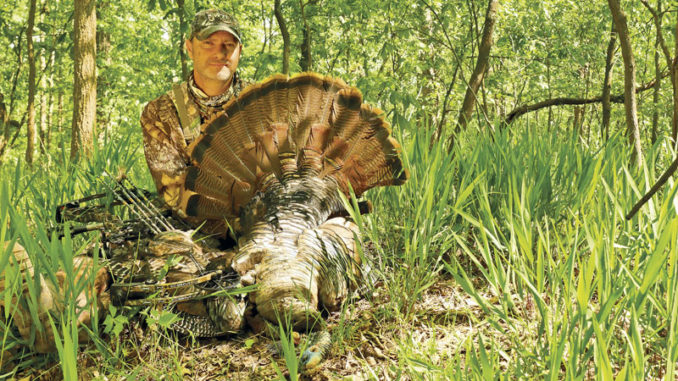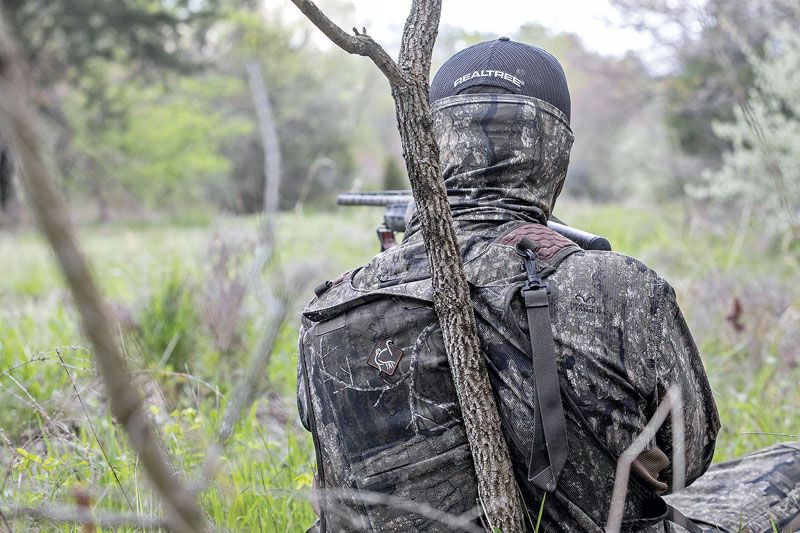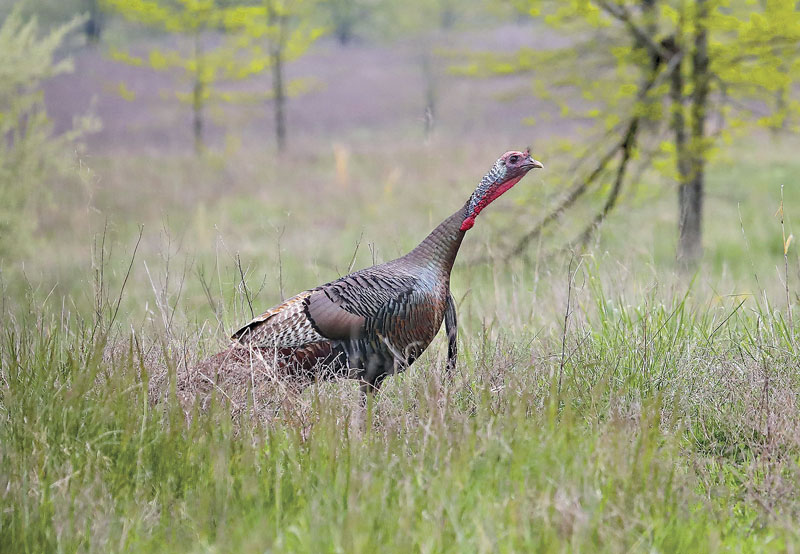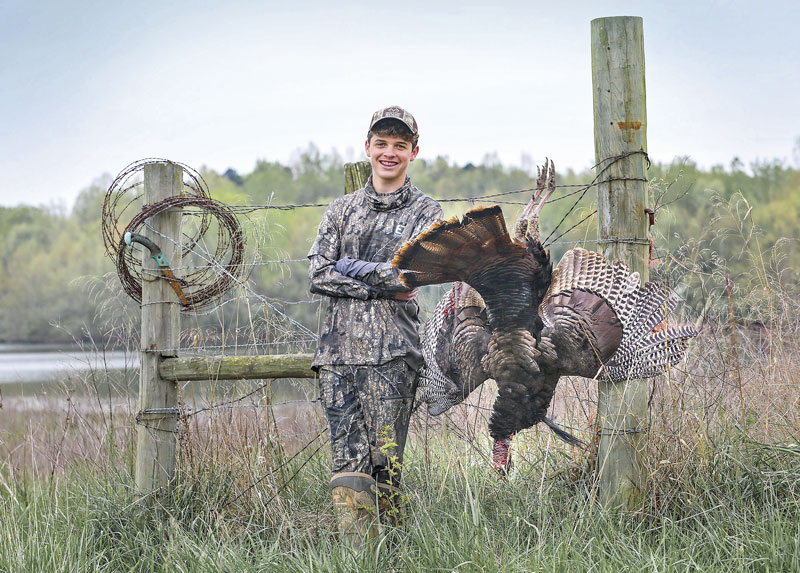
Habitat loss, predators and flooding have huge impact on populations
My love affair with the Louisiana Wild Turkey began on a Claiborne Parish ridge more than 30 years ago during the winter of 1991.
As a young outdoor videographer, I had become friends with Luke Lewis, a forester and biologist for Willamette Industries, which at the time owned 275,000 acres in south Arkansas and north Louisiana. Lewis, along with several others, was helping lead the charge of returning huntable populations of the game bird back to north Louisiana. On that day, I would video five gobblers being released back into the wild, with the hopes of Louisiana turkey hunters flying with them.
With financial help from Willamette, National Wild Turkey Federation and LDWF, around 1,200 birds would be released over 1991 and 1992, with each release site receiving five gobblers and 25 hens. The big birds were released into the larger creek bottoms around the region. Dugdemona River, Corney, Leatherman, Caster and Horse Creeks would serve as “highways” amongst the pine plantations for turkeys to move away from the initial release sites.
The restocking efforts would be successful, and after an initial three to five year waiting period, the spring season was opened to the joy of Louisiana turkey hunters. Almost immediately turkey hunting began to grow in popularity, and along with it, the NWTF’s membership numbers exploded within the state. Local NWTF banquets were crowded events and money poured into the Louisiana Superfund, which provided funds for improvements on state lands. At the time, no one could have envisioned Louisiana’s wild turkey flock struggling.

But now, bad news
Now, on any given spring day, in almost any given sporting goods store in Louisiana, you can overhear conversations amongst turkey hunters proclaiming that Louisiana wild turkeys are in peril. Comments go like this:
“We just don’t have the numbers like we used to.”
“I used to hear multiple gobblers on a decent spring morning. Now, I’m lucky if I hear one.”
“The forestry companies have ruined turkey hunting.”
“We’ve just got way too many turkey hunters these days.”
According to Dr. Bret Collier, Professor of Wildlife Ecology at LSU, Louisiana turkey hunters need to understand first and foremost how difficult it is for a wild turkey poult (baby turkeys) to reach adulthood.
“Four out of five turkey nests fail, due to predators, scavengers or weather related incidences. In addition, for every 10 nests that hatch, only three will have poults reach maturity,” he said. Simply stated, the odds aren’t in their favor. In addition, the wild turkey is the only upland bird we hunt during its reproductive season, which creates a unique set of circumstances from a management standpoint.

Changing landscape
Collier added that after hunting seasons opened following the restocking efforts of the early 90’s, biologist began to see harvest numbers drop, starting in the early 2000’s. Louisiana was seeing a change in landscapes, and not just in the form of urban sprawl in areas like the Northshore or Feliciana Parishes.
“Timber companies began moving away from prescribed fire, which is one of the best tools for creating quality turkey habitat, and instead began using chemical applications which in many cases, eliminated vital understory habitat,” he said.
Biologists like Collier decided to focus on wild turkey ecology, believing that a better understanding of wild turkeys, their breeding cycle, nesting habits and other factors could result in helping Louisiana turkeys thrive.
“Our long-term studies are producing vital information that can help the Louisiana Department of Wildlife and Fisheries set season dates and bag limits while allowing private landowners to understand what they can do to help,” he said.
In one study, researchers learned hens that were bred earlier and began nesting earlier, had more successful broods. Based on this information, LDWF made the decision to delay opening day.
“By doing so, mature gobblers are allowed to breed hens early without the threat of being harvested,” Collier said. “It’s important that we allow these mature gobblers to breed, because contrary to what some hunters may believe, Jakes cannot successfully breed hens.”
Predators, scavengers, flooding
Collier wasn’t as quick to blame low turkey numbers on predators as many hunters. While he believes trapping can be beneficial, he maintains predators do the most damage to wild turkeys in areas where the habitat isn’t suitable. In fact, Collier feels scavengers or nest predators, a group consisting of crows, armadillos, raccoon, skunk and opossum, take a tremendous toll on wild turkeys.
“This is why it’s so important that landowners do their best to create ideal habitat for nesting hens,” he said.
Nesting hens need dense vegetation close to the ground that will conceal them. Young turkeys need low-growing vegetation where they can forage without being exposed to predators.
“If you have the right habitat, predators and scavengers will have a much more difficult time preying on your flock,” Collier said.
In many parts of the state, flooding can and has been detrimental to turkey numbers. Collier spoke about the impacts associated with flooding in the Atchafalaya Basin.
“We estimate that 80% of all wild turkeys living in the Basin died from starvation during the last basin flooding,” he said. “For wild turkeys, events like this take years to recover from.”
Likewise, flooding along the Mississippi River has also taken a toil on population numbers more recently.

What can you do?
Collier recommends the first thing landowners should do is contact your LDWF private lands biologist and ask for help. Private land management assistance is free, and the biologist will create a plan specific to your property.
In addition, Collier believes that landowners should form cooperatives or associations with neighboring property owners.
“The more acreage you can get that’s being managed correctly for turkeys, the more turkeys you’re going to have,” he stated emphatically. Private Lands offices are in Monroe, Minden, Pineville, Lake Charles, Lafayette, and Hammond.
A personal note
Last year, my family purchased a small tract of land in western Caldwell Parish. At the time of purchase, the property, which is a 50/50 mix of mature pine and hardwood, hadn’t been touched in many years and only contained one very old and grown up logging road. Walking the property over thoroughly for the first time, I was disappointed in my inability to find any turkey sign.
Over the next few months I cleared the old logging road out and opened up 40 foot clearings on each side. I then planted wheat and rye, thinking the local deer population would be the only wildlife utilizing the area. To my surprise, I began getting trail camera photos of turkeys, and eventually one recent morning while deer hunting was treated to the sights and sounds of a large fall flock moving through the woods and headed towards my planted openings.
As a diehard Louisiana hunter, I’m confident that the research Dr. Collier, LSU, the US Forest Service and LDWF are doing will result in a bright future for both Louisiana wild turkeys and the hunters who pursue them.

Talking turkeys: Facts about Louisiana’s wild birds
The Louisiana Department of Wildlife and Fisheries has quite a bit of information on the state’s turkey populations and turkey hunting on its website. For information specific to turkeys, go to https://www.wlf.louisiana.gov/subhome/turkey.
LDWF conducts and sponsors a number of research projects to study population status, habitat needs, biology, harvest characteristics, and harvest rates. These include gobbling activity surveys, banding studies, and nesting ecology studies. From this research, we have learned that:
Turkeys are quite mobile — movements of more than 5 miles are common in contiguous habitat. In one study, two radio-tagged hens moved about 20 miles before radio contact was lost.
In Louisiana, turkeys primarily start to nest during the second week of April.
Gobbling activity generally increases until the start of hunting season, regardless of the start date.
Harvest rates can be highly variable each year depending on the site, bag limit, and season length.
Brood size is generally largest in the western longleaf region of the state.
Adult gobblers typically make up more than 80% of the reported annual harvest.


